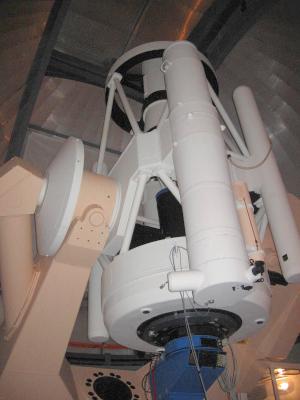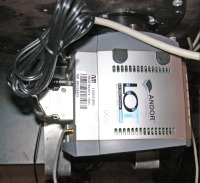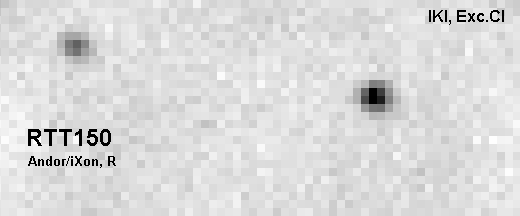

First observations with new Electron Multiplying CCD
In 2009 a new Electron Multiplying Frame Tranfer CCD Andor iХon DU-888 was purshased with support from Excellence Cluster Universe, Technische Universitaet Muenchen and delivered to RTT150 telescope.

The CCD has excellent characteristics and allow to obtain high quality images with very short exposures (up to 8 fps full frame and up to 300 fps in small subimage) and with very low effective readout noise. In October 2009 it was installed at the telescope by IKI specialists. First scientific observations were made on 3--10 November 2009.


In particular, the time resolved observations of Crab pulsar were made (33 ms pulse period). In the Figure we show the pulse profile with 7 msec time resolution, obtained in a single 10 minute long observation. Due to very high statistical significance of pulse detection the accuracy of pulsar period determination is very high.

In order to check the possibility to solve various scientific tasks where the high time resolution is needed, the observations of eclipsing binaries with strongly magnetised white dwarf (polars) were made. These systems enter into eclipses quickly, at less than few seconds time scale, since the size of emitting spot is small, less than few hundreds kilometers and the companion star is moving with large velosity, >100km/s. The profile of one of the eclipses of polar SDSS J015543+002807 is shown in the Figure. This and similar observations could be used to determine the size of polar caps at the WD surfaces in binary systems.
One of the most important proplems which we plan to deal with using this new CCD, is to study fast aperiodic variability of emission of compact sources. The preliminary results of these first scientific observations demonstrated the high quality of the CCD.

